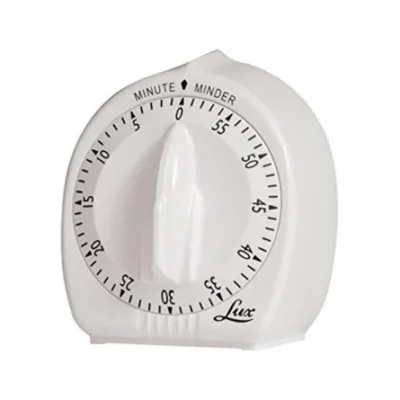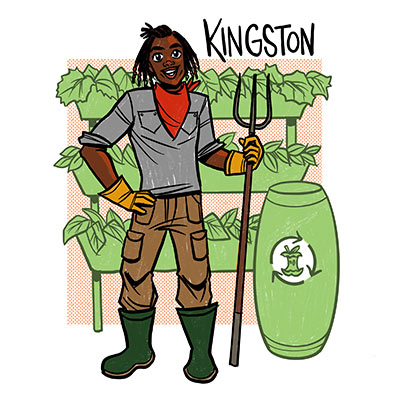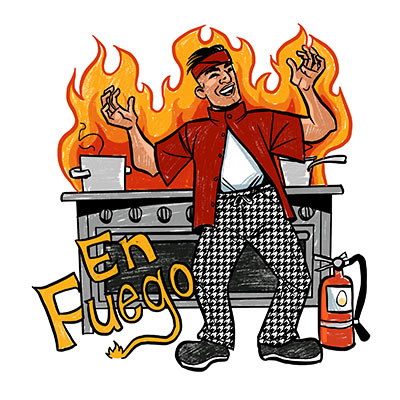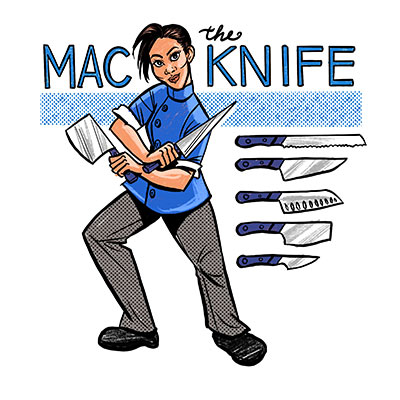Kitchen Math
We use many types of math every day in the kitchen. When we measure ingredients, double or half recipes, convert temperatures, work out food budgets or making sure the turkey will fit in the oven at Thanksgiving. Math is all around us and an extremely important for any cook.
How To Measure Like A Pro
I know it seems like every chef on TV chops up some food and throws it in a bowl without measuring anything, and voila! The food comes out of the oven looking perfect. Experienced cooks can usually measure by eye but as a new cook it is important that you follow directions and measure exactly using the proper tools. Measuring ingredients is the foundation of following a recipe and creating an awesome meal.
Liquid Ingredients: Measure liquids, such as water, milk, and juice in a liquid or wet measuring cup. This cup will have a spout to pour the liquid and have lines marked on the side to measure fluid ounces. When you measure liquids, make sure that you place the measuring cup on a flat surface to level the liquid and get an accurate measurement.
Dry Ingredients: Measure dry ingredients such as flour and sugar in dry measuring cups and measuring spoons. Dry measuring cups and spoons usually come in sets. The tops are level, and they do not have spouts. Remember to spoon your dry goods into the cup and don’t pack it down. Next level off the top of the cup and spoon to get an “eggsact” amount.
Temperature: We use various style of thermometers to measure the temperature of our foods. Stem thermometers have a probe that can go inside of food to get internal temperatures. These can range from very basic to wifi enabled devices with apps. Some thermometers can withstand extreme cold and heat for freezers and ovens.
Scales: Professional bakers prefer to use a scale for precise amounts of each ingredient while making baked goods. A digital scale or triple beam balance will ensure that your recipes are perfectly measured every single time you cook.
Numbers: Use a calculator for easy recipe and temperature conversions. You have one on your phone, so there is no excuse.
Time: A kitchen timer is a great way to keep track of your cooking times and make sure you don’t overcook your food. You can use the clock on your oven or the one on your phone. You can wet multiple times for different items and keep your cooking on track.

Measuring Cups

Measuring Cup

Thermometer

Timer

Digital Scale

Calculator
Easy Measurement Conversions
Wet Measurements
1 Gallon (g.) = 4 quarts (qt.) = 16 Cups (C.) = 8 Pints (pt.) = 16 Cups = 128 Fluid Ounces (fl.oz.)
1 Quart = 2 Pints = 4 Cups
1 Pint = 2 Cups = 16 Fluid Ounces
1 Cup = 8 Fluid Ounces
1 Fluid Ounce (fl. oz.) = 2 Tablespoons (tbsp.)
Dry Measurements
1 pound (lb.) = 16 ounces (oz.)
1 ounce (oz.) = 28 Grams (gm.)
¼ cup (C) = 4 Tablespoon (tbsp.)
1 Tablespoon (tbsp.) = 3 Teaspoons
(tsp.)
Fahrenheit vs. Celsius
We use Fahrenheit (°F) in the U.S. to measure temperature. Most other parts of the world use Celsius or Centigrade (°C). These methods of measuring temperature were created by Dutch physicist Daniel Gabriel Fahrenheit and Swedish astronomer Anders Celsius.
Freezing is 32° F and 0° C
Boiling is 212° F and 100° C
How to Convert Fahrenheit to Celsius and Back Again
(C x 1.8) + 32
= F
(F – 32) ÷ 1.8
= C








